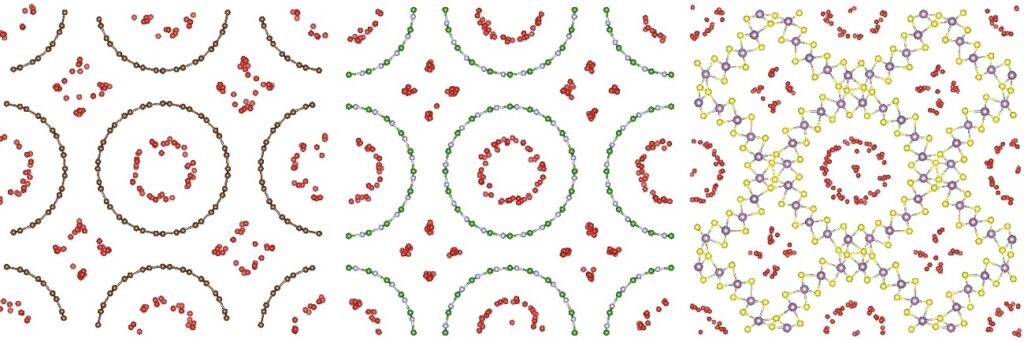Our paper titled “Nanotube-Mediated Storage of Methane and Hydrogen: Insights from Molecular Simulation” has been published online in the journal “Journal of Environmental Chemical Engineering”, accessible at https://doi.org/10.1016/j.jece.2024.113592

Using the Grand Canonical Monte Carlo (GCMC) algorithm, our study investigated CH4 and H2 storage in carbon, BN, and MoS2 nanotubes. BN nanotubes showed superior CH4 adsorption at 298 K, nearing the DOE target with 0.441 g/g at 8 MPa, while MoS2 nanotubes had the lowest capacity at 0.096 g/g due to their atomic mass. For hydrogen at 77 K, (30,30) BN nanotubes exceeded 2025 DOE benchmarks with 12.19 wt% and 0.051 kg/L at 8 MPa. The study highlighted the complex relationship between adsorption heat and quantity and identified a linear correlation between gas release and material porosity. IAST validated the (30,30) BN nanotubes as optimal for CH4/H2 separation, offering high adsorption and selectivity at 8 MPa.
The Journal of Environmental Chemical Engineering provides a forum for the publication of original research on the development of alternative sustainable technologies focusing on water and wastewater treatment and reuse; treatment, reuse and disposal of waste; pollution prevention; sustainability and environmental safety; recent developments on green chemistry; alternative methods of remediation of environmental accidents including but not limited to oil spills in water bodies and nuclear accidents.
The journal is classified as Q1 in the latest edition of the Web of Science (WOS) journal ranking. The 2024 impact factor is 7.4, with a CiteScore of 11.40 and an SJR (Scientific Journal Ranking) index of 1.355. The Chinese Academy of Sciences (CAS) SCI Journal Ranking (Engineering and Technology, Zone 2, TOP).